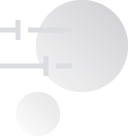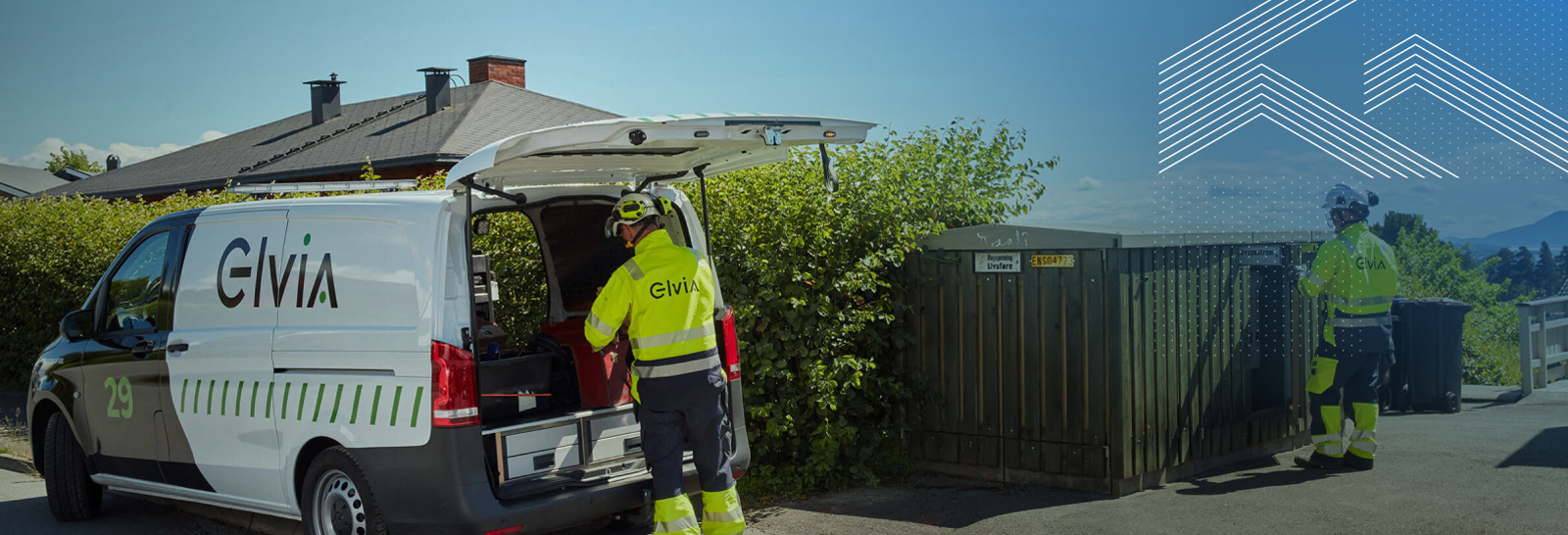HashiCorp Products Used
Customer Story
Lighting the way forward
Norwegian power utility uses HashiCorp Terraform and Vault to consolidate systems, integrate 950,000 smart meters, and establish a new future for green power distribution.
- 2 million+ customers
- 200 workspaces, 40+ modules
- 950,000 integrated data streams
- 65,000+ km of cables
- 10s of thousands of dollars in cost savings
- Reduced infrastructure deployment time by days
In 2020, Eidsiva Nett and Hafslund Nett merged to form Elvia, Norway’s newest utilities company, responsible for supplying electricity to millions of people in Oslo, Viken, and Innlandet every day. With headquarters in Hamar in southern Norway, they are Norway's largest network company with over 800 employees. Elvia monitors its network around the clock every day from their operations center. The company upgrades and maintains over 65,000 km of networks and cables to ensure that Norway’s power supply is stable. They use bleeding-edge technology combined with many years of experience and expertise to provide customers with the services they need and want.
We looked at a number of other possible solutions, but couldn’t find any with the cross-platform capabilities or flexibility HashiCorp solutions offered,” Heitmann explains. “Add to it the fact that we can consolidate all of our disparate legacy systems into a single platform and single source of truth while separating service and secrets management on our various clouds, and it was really a simple decision.
Ståle Sveia Heitmann, CTO, Elvia
What’s old becomes new
With long summer daylight and short winter days, Norwegians have unique challenges around lighting and electricity. They rely on Elvia to supply the power they need to keep more artificial lights — along with other conveniences of a modern country and lifestyle — up and running reliably, predictably, and efficiently.
One of a handful of primary utility companies in the country, the century-old Elvia provides electric power to more than 2 million Norwegians through an expansive power grid built over generations. But population growth, an emphasis on environmental sustainability, and a merger with another utility company forced Elvia into undertaking a massive transformation initiative that pushed both its people and its legacy IT environment to the brink.
“As a 100-year-old company with its own legacy IT infrastructure and culture, comprehensive change can be a long and difficult undertaking,” says Ståle Sveia Heitmann, Elvia’s chief technology officer. “That’s especially the case when you’re trying to integrate and deliver data from hundreds of thousands of smart meters while simultaneously combining systems with a new business partner. As a result, we determined pretty early on that the best way to achieve such an expansive modernization effort was to completely rebuild our IT foundation to support hybrid infrastructure, but knew we’d also need a completely different set of management tools to do it.”
A transformation times two
For generations, Elvia has relied on a complex network of on-premises systems and a skilled team of technical and electrical experts to operate approximately 28,000 distribution transformers and overhead lines and cables that span the region. It had partnered with global tech giants to stand up and manage the IT infrastructure to run the various aspects of its grid operations, but didn’t have any visibility or control over how those systems were used.
While the company had been slowly leaking money from idle resources because of its inability to easily assess and right-size the IT resource pool supporting its daily operations, the bigger challenges were looming ahead. First, a new initiative driven by one of Europe’s largest research centers for intelligent electricity distribution to install nearly 1 million smart electricity sensor meters across its grid which greatly expanded the new organization’s geographic footprint — and its infrastructure challenges. This eventually coincided with the second issue: two traditional utilities companies merged to create a new one, called Elvia.
“Even though it was two utilities merging, we didn’t have any systems in common, which created a bunch of IT headaches deciding whether to integrate them, build something new, or buy something new for everyone to use,” Heitmann says. “The bigger problem though, was integrating and delivering data from smart meters to target databases, since there were about a million meters out there, each with four to five data points apiece that needed to go to multiple Azure, Google Cloud, and on-prem destinations.”
Challenges

Integrating disparate systems from two different utility companies

Enabling greater automation, visibility, and control over cloud and on-premises systems

Incorporating data from nearly 1 million smart meters across the country
Why HashiCorp?
Terraform and Vault are the foundations of a modern IT platform that will help bring our century-old company into the modern era and fully allow us to both solidify the underlying infrastructure for reliably delivering power to people across our country while also embracing the environmentally friendly technologies that will help us do it more efficiently and responsibly.
Ståle Sveia Heitmann, CTO, Elvia
Single source of truth for delivering a greener future
The roll-out of the smart meters marked the beginning of a new era where the utilities had to handle, and benefit from, large amounts of sensor data that hadn’t existed previously. This sparked the need for a new breed of solutions; they began developing in-house then started incorporating HashiCorp Terraform and Vault as integral parts of their development framework.
Elvia adopted Terraform and Vault for a simpler, more efficient, and cost-effective way of merging a range of core systems and integrating data transport workflows from its burgeoning smart meter deployments.
“We looked at a number of other possible solutions, but couldn’t find any with the cross-platform capabilities or flexibility HashiCorp solutions offered,” Heitmann explains. “Add to it the fact that we can consolidate all of our disparate legacy systems into a single platform and single source of truth while separating service and secrets management on our various clouds, and it was really a simple decision.”
With Terraform, Elvia engineers leverage templates to enable developers from both legacy organizations to write, share, manage, and automate any infrastructure across AWS, Google Cloud, and on-premises systems. This lets them rapidly deploy infrastructure to support everything from smart meter data transport and analytics to automating core transformer operations and health checks across the combined company’s grid.
“HashiCorp Terraform comes with great documentation and super helpful forums that make it easy for everyone on both companies’ teams to learn the new syntax pretty quickly and hit the ground running,” says Marius Matonis, Elvia’s technical lead. “We’ve used the modules and templates to build nearly 40 different systems and runtime environments in GitHub, Azure, GCP, and others across nearly 200 different workspaces up to three days faster per instance than we could have in the past.”
While the SaaS-based HCP Terraform has helped the company sunset many of the overprovisioned and idle virtual machines to potentially save tens of thousands of dollars in operating spend each year, Vault has similarly simplified the company’s secrets management operations to help further accelerate the organization’s transformation.
“In the past, we’d used some of the built-in secrets management tools from our cloud providers, but Vault is a much more elegant, simple, and stable solution for our needs,” Matonis states. “We can even use Terraform to set up Vault clusters, so we no longer have to worry about manually creating, distributing, and managing access keys to core systems and services. It’s automated and frees us up to focus on continuous integration and deployment priorities and really push our initiatives forward.”
Though the company’s transformation is still in its infancy, Heitmann and Matonis agree that HashiCorp solutions have played an instrumental role in the organization’s success to this point, and expect that the enhanced automation, streamlined operations, and standardized processes will enable the company to achieve its business goals sooner than later.
“Prior to building a platform entirely defined in code, we had no automation, no visibility, and really no idea how to take on such a massive change,” Heitmann says. “Terraform and Vault are the foundations of a modern IT platform that will help bring our century-old company into the modern era and fully allow us to both solidify the underlying infrastructure for reliably delivering power to people across our country while also embracing the environmentally friendly technologies that will help us do it more efficiently and responsibly.”
Outcomes

Unified disparate IT systems across multiple clouds into a single source of truth

Integrated data streams from over 950,000 smart meters to multiple cloud and on-premises databases

Eliminated costly idle VMs, potentially saving tens of thousands of dollars annually

Reduced infrastructure deployment times by days

Achieved greater automation and integration capabilities
Solution
Elvia AS is using HashiCorp Terraform and Vault to standardize and streamline infrastructure provisioning for nearly 1 million smart meters and related databases, along with secrets across the utility’s cloud and on-premises operations platforms.
Elvia Partners

Ståle Sveia Heitmann Chief Technology Officer Elvia
Ståle Heitmann is the CTO of Elvia AS and responsible for the company’s development and data platforms. Prior to joining Elvia, Ståle spent close to 20 years as a developer and architect, consulting for various companies both in the private and public sectors.

Marius Matonis Technology Lead Elvia
Marius Matonis is the tech lead at Elvia. He works with the development platform for core systems and is responsible for the systems being built in accordance with recommended practice. In addition, he ensures that internal competence, routines, and practice are present.
Technology Stack
- Infrastructure:
- Google Cloud, Microsoft Azure, AWS, on-premises
- Workload type:
- Linux, Windows
- Container runtime:
- Docker
- Orchestrator:
- Azure Kubernetes Service (AKS), Google Kubernetes Engine (GKE)
- CI/CD :
- Azure DevOps
- Data service :
- Big Query, Big Table, SQL Azure, Azure Cosmos DB, Azure Blob Storage
- Version control :
- Git, platform GitHub
- Networking:
- Traefik
- Provisioning :
- HashiCorp Terraform
- Security management :
- HashiCorp Vault
